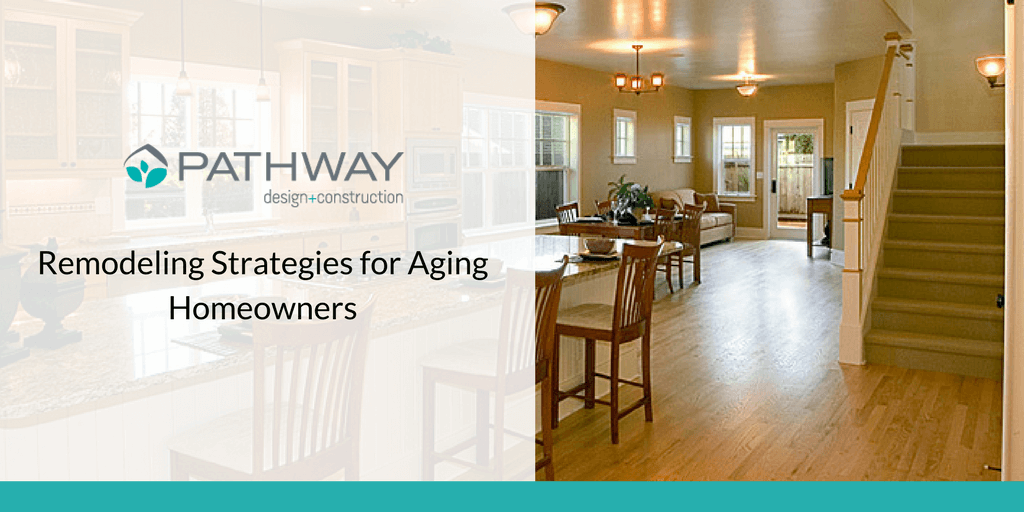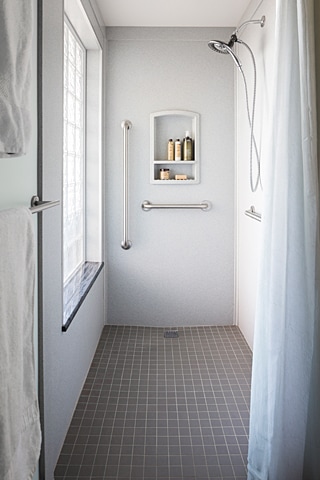
Remodeling Strategies For Aging Homeowners
At my remodeling company, Pathway, when we work with clients who would like to explore Aging in Place options, we start by enlisting the services of an Occupational Therapist or OT. OTs are licensed health professionals who understand the health and disability issues people face over a lifetime and how to match the abilities of an individual with needed supports. According to the AARP website, an OT may do the following:
- Assess an individual's abilities, challenges and needs (this is often done by asking questions, such as: Do you have medical conditions that impact your daily life? What activities are painful or difficult for you to do?).
- Perform a home evaluation and recommend changes to increase safety and ease of use.
- Identify furnishings, equipment, and techniques that can help with regular or needed activities.
- Suggest and demonstrate techniques that can make essential activities possible and easier.
THE CERTIFIED AGING IN PLACE SPECIALIST (CAPS)
Developed by the National Association of Home Builders (NAHB), along with the AARP and others, the Certified Aging in Place Specialist (CAPS) training program certifies building industry professionals to apply Aging in Place modifications to home building and remodeling designs.
At Pathway, I am the CAPS professional. In other situations, the remodeler may bring in a CAPS professional from the outside as well as an OT. After the OT does their work, the CAPS applies the information supplied by the OT to propose potential modifications to the home's layout, features, and fixtures to enhance function and safety. Because budget is also often an issue, the CAPS can recommend a range of options from most to least critical.
Safety is the primary driver behind added modifications. More than one-third of all injuries to older adults occur in the bathroom, so a lot of attention is paid to modifications to that room. Accessibility is also an important aspect of AIP design. This may involve making room for wheelchairs or walkers, removing barriers to mobility, or making things easier to operate or reach.
Modifications can include:
- Increased lighting
- Accessible light switches at both ends of stairs or hallways
- Lever-style door handles that are easy to reach and operate
- Additional railings and grab bars
- Handheld flexible showerheads
- Non-slip/skid flooring for both traction and cushion
- Slip-resistant shower and tubs
- Curbless (walk-in) showers for easy access
- Wider doorways to allow for wheelchairs
- Step-free entrance and/or wheelchair ramps

HOW TO GET STARTED
The first step is getting the OT assessment. To learn more about OTs, visit aota.org. To find an OT in your area, check with your physician, health insurance provider or local hospital. OTs are generally paid a flat fee per visit and their services may be covered by health insurance.
The second step is to find a CAPS professional that can work with a remodeler to land on the modifications that are right for you and your home. To find a CAPS professional in your area, visit the NAHB CAPS directory.
Applying aging in place concepts to a family home is a wonderful idea that can bring great peace of mind. With thoughtful modifications that increase safety, accessibility, and functionality you or your loved ones can enjoy the gift of aging gracefully and comfortably for years to come.
Take a look at another recent post: Could a Remodel Make Daily Activities Easier as You Age?
